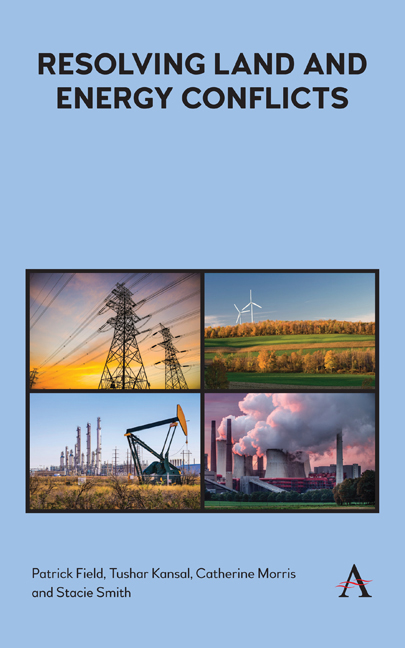Book contents
- Frontmatter
- Contents
- List of Illustrations
- About the Authors
- Acknowledgments
- 1 Introduction: The Complexity and Conflicts of Energy in the US Landscape
- 2 Land-Based Wind Energy Siting: The Not-So-Silent Wind
- 3 Nuclear Waste Siting: Getting Good People to Accept the Bad
- 4 Gas and Oil and Unconventional Shale: The New Old Frontier
- 5 The Linear Challenge: Transmission and Natural Gas Pipelines
- 6 Conclusions and Recommendations
- References
- Index
1 - Introduction: The Complexity and Conflicts of Energy in the US Landscape
Published online by Cambridge University Press: 29 May 2019
- Frontmatter
- Contents
- List of Illustrations
- About the Authors
- Acknowledgments
- 1 Introduction: The Complexity and Conflicts of Energy in the US Landscape
- 2 Land-Based Wind Energy Siting: The Not-So-Silent Wind
- 3 Nuclear Waste Siting: Getting Good People to Accept the Bad
- 4 Gas and Oil and Unconventional Shale: The New Old Frontier
- 5 The Linear Challenge: Transmission and Natural Gas Pipelines
- 6 Conclusions and Recommendations
- References
- Index
Summary
Why Is Energy Development and Production Important in Regard to Land Use?
Gas and oil wells dot landscapes from Pennsylvania to Texas, bringing both wealth and controversy around air and water quality, wildlife habitat and community change. The advent of nuclear power in the 1950s started a boom of uranium mining, refining and energy production but brought with it the difficult problem of where and how to safely store potently lethal postenergy production nuclear waste for millennia. Appalachia has been shaped for over a century by coal extraction. More recently, the rapid expansion of wind and solar energy has given rise to host of new companies, beneficiaries and conflicts. Wind development, particularly in the more densely populated landscapes of the northeast, has generated conflicts among environmental groups, local citizens at odds with local impact versus global need. Around the country, there is a raised awareness that “clean” energy has its costs too.
Energy extraction and production have powerfully shaped the US landscape over the last hundred years. Blessed with extraordinary natural resources, the United States built the largest economy in the world. While we think of land use primarily as a local function shaped by the creation of housing, office space, tracks and roads, energy production is also a powerful player in land use.
The United States is one of the largest producers of energy in the world. In 2013, it was the world's largest producer of natural gas (30,005,254 million cubic feet) and oil (2,720,782 thousand barrels) and the second largest producer of coal (nearly 1 billion short tons) and renewable energy (at 9.33 quadrillion Btu). Fossil fuels are the main source of energy in the United States. Fossil fuel resources comprised approximately 82 percent of total US energy consumption in 2013 (with nuclear energy comprising 8 percent and renewable energy 10 percent). Beyond generating energy, these natural resources are essential to creating other products, such as oil to make asphalt and coal for steel. Energy production in its many forms cuts across locales and states, and it affects landscapes substantially, if unevenly, across the United States.
- Type
- Chapter
- Information
- Resolving Land and Energy Conflicts , pp. 1 - 14Publisher: Anthem PressPrint publication year: 2018

